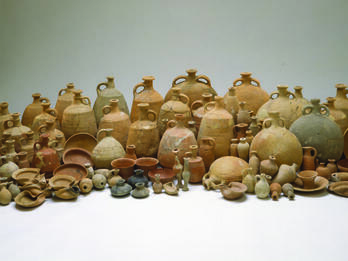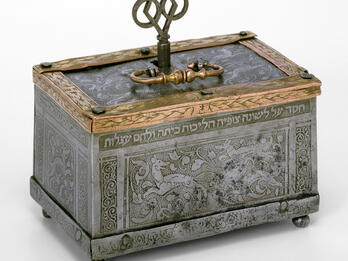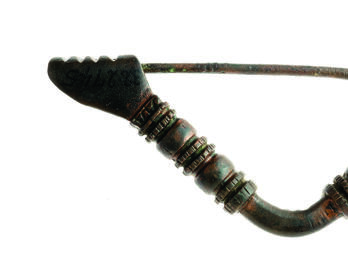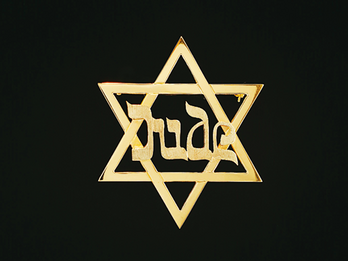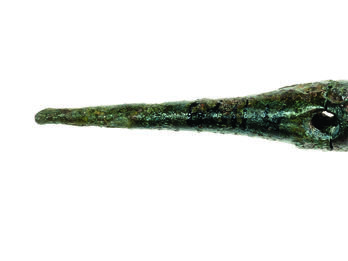Showing Results 1 - 6 of 6
Restricted
Image
About a thousand items that had accumulated over time were found in the repository of Cave 25 in the Ketef Hinnom cemetery. They included jewelry, ivory and bone inlays, arrowheads, tools, and a large…
Places:
Ketef Hinnom, Land of Israel (Jerusalem, Israel)
Date:
Iron Age IIC–Early Persian Period, 7th–5th Centuries BCE
Subjects:
Categories:
Restricted
Image
This exquisite jewelry box was crafted in Nuremberg, Germany, before 1540 and given to a bride for her wedding. Etched in steel, copper-plated, and partly gilt, the panels, on four sides and the lid…
Contributor:
Artist Unknown
Places:
Free Imperial City of Nuremburg, Holy Roman Empire (Nuremberg, Germany)
Date:
Before 1540
Subjects:
Categories:
Restricted
Image
The fibula, which replaced the toggle pin during the Iron Age, is similar to a modern safety pin. It had a main bent section with a clasp, which was often elaborately decorated, and a simple straight…
Places:
Tell Beit Mirsim, Land of Israel (Tell Beit Mirsim, Israel)
Date:
Iron Age II, Early 10th–Early 6th Century BCE
Subjects:
Categories:
Restricted
Image
In the early 1980s, Eshel-Gershuni began making what she called “fetishes” or “impossible jewelry,” transferring her skills as a jewelry-maker to sculpture. She combined expensive materials like gold…
Contributor:
Bianca Eshel-Gershuni
Places:
Tel Aviv, Israel
Date:
1981
Categories:
Restricted
Image
Cherkassky’s gold Star of David with the word “Jude” in its center was displayed in Collectio Judaica at the Rosenfeld Gallery in 2003. It was the artist’s first major solo exhibition. The theme of…
Contributor:
Zoya Cherkassky
Places:
Tel Aviv, Israel
Date:
2001
Subjects:
Categories:
Restricted
Image
Toggle pins and fibulae were fasteners for garments, and because they were often decorated, they also functioned as jewelry. The toggle pin was a thick straight pin, ornamented on its upper part or…
Places:
Mizpah, Land of Israel (Tell en-Nasbeh, West Bank)
Date:
Iron Age I, 12th–10th Century BCE


